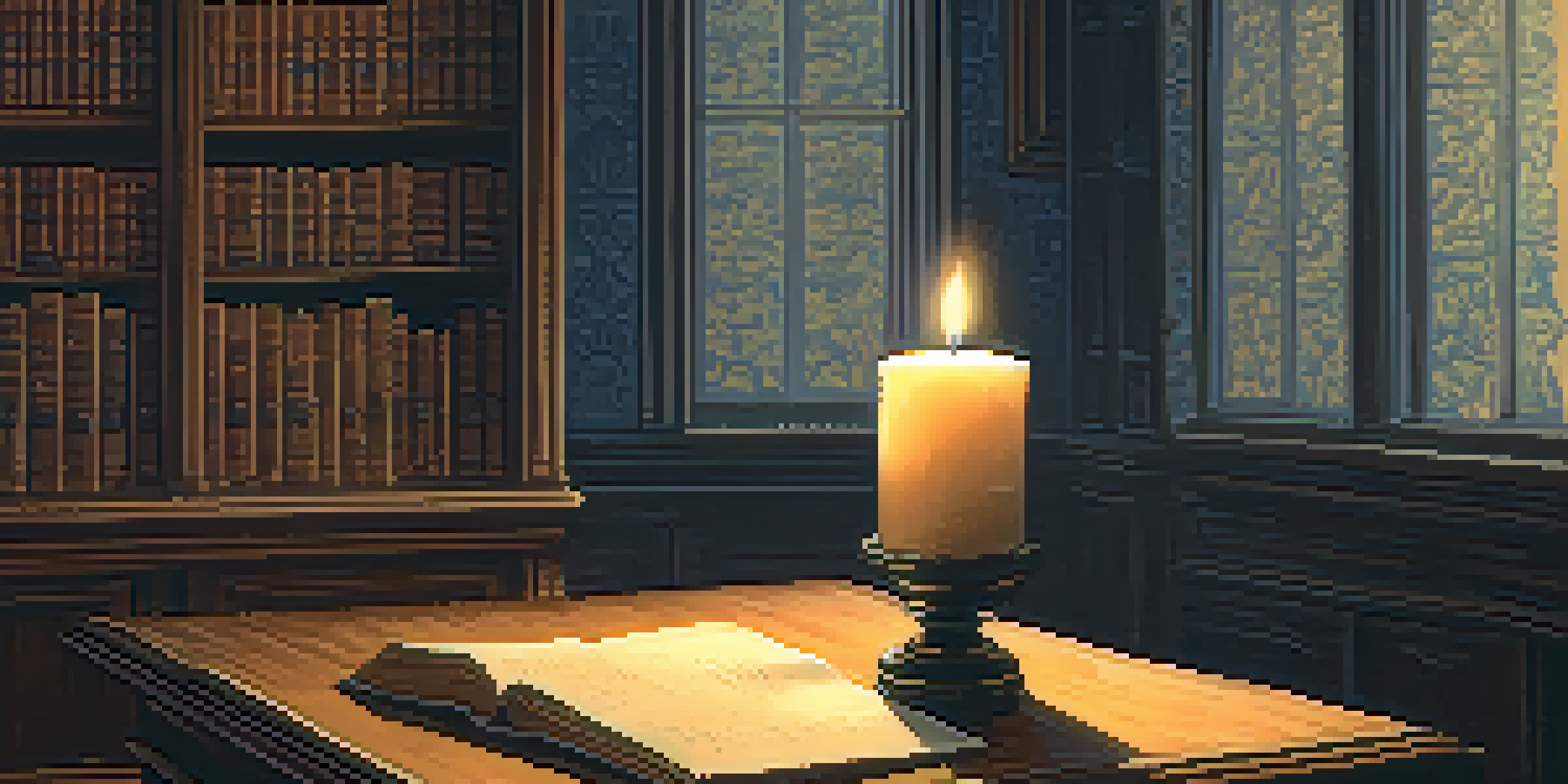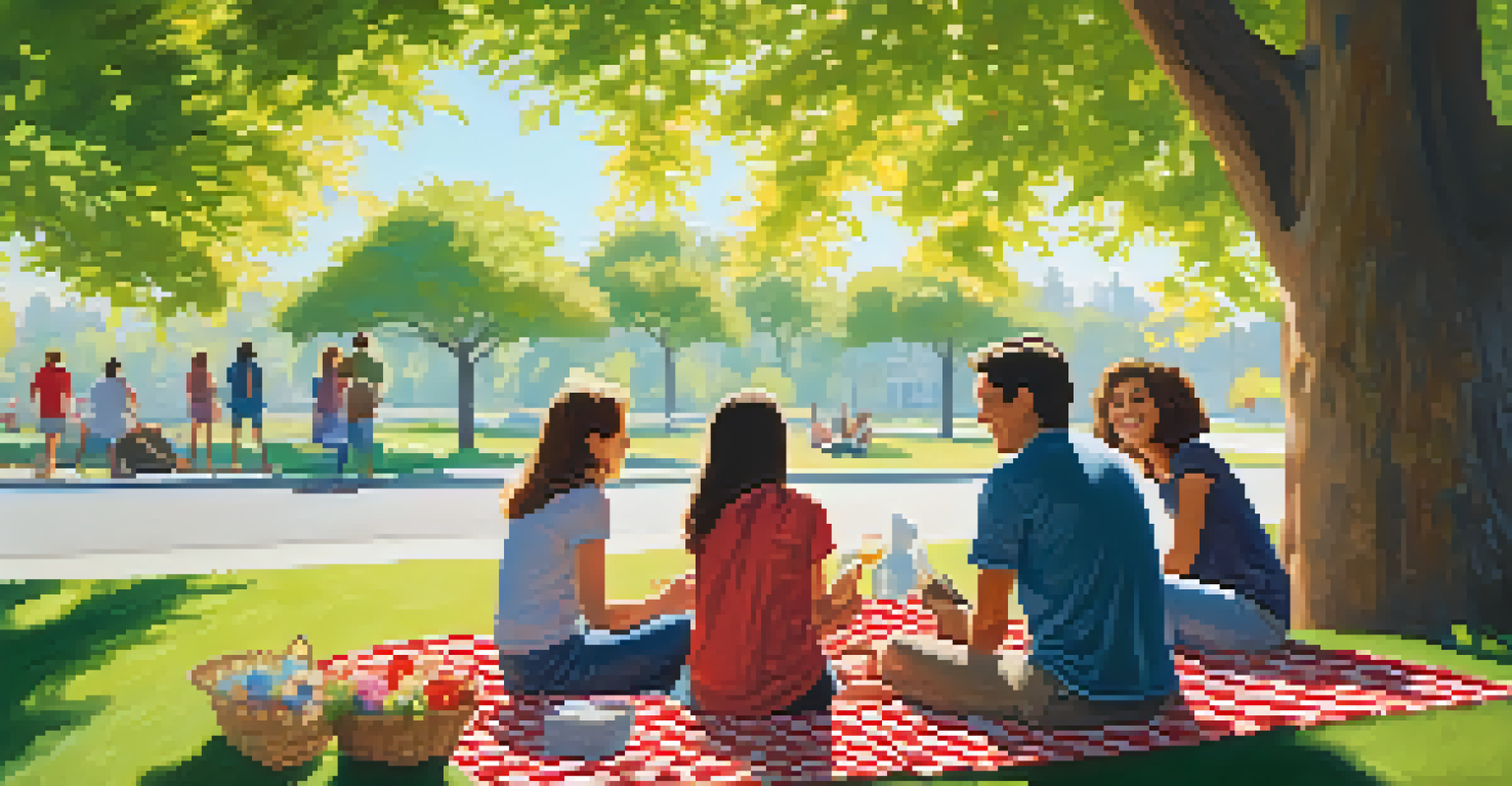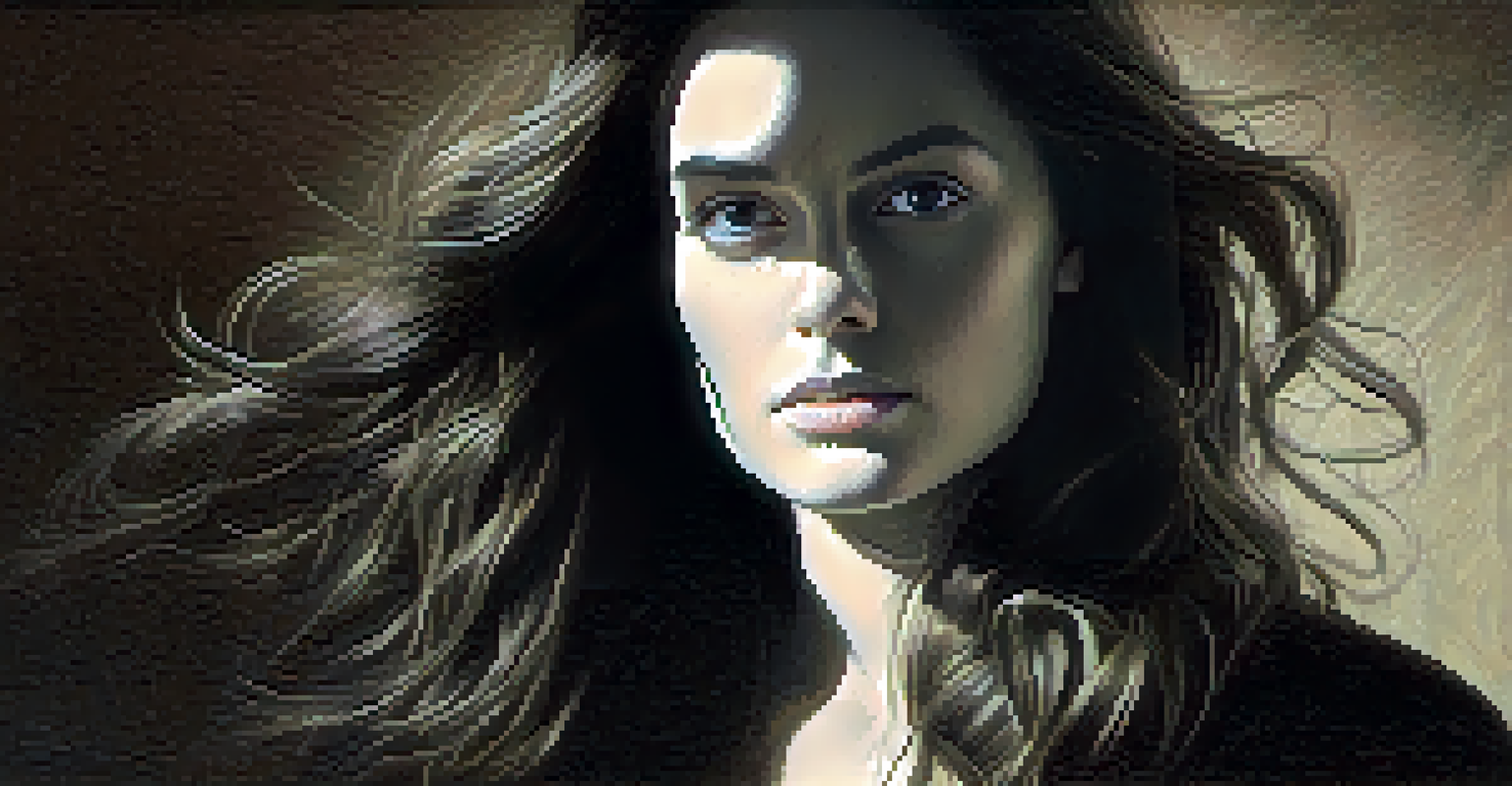Lighting as a Character: Its Role in Film Narratives

Understanding Lighting's Role in Film Storytelling
Lighting in film is not just about visibility; it's a powerful storytelling tool. It helps to establish mood, create tension, and accentuate the emotional undercurrents of a scene. For instance, a dimly lit room can evoke feelings of mystery or danger, while bright lighting can suggest happiness or clarity.
Lighting is the magical ingredient that enhances the emotional impact of a film.
Filmmakers often use lighting to guide the audience's attention, signaling what is important in the frame. By controlling light, they can highlight characters' emotions or draw focus to specific objects that might hold significance in the narrative. This technique can subtly influence how viewers interpret the unfolding story.
Ultimately, lighting acts almost like an unseen character, shaping the audience's experience and understanding of the film. Its impact is profound, as it frames not only the visuals but the very essence of the narrative being told.
Different Lighting Techniques and Their Effects
There are various lighting techniques filmmakers employ, each producing distinct effects. High-key lighting, which is bright and even, often creates a cheerful atmosphere, while low-key lighting introduces shadows and depth, generating suspense or drama. The choice of technique directly influences how viewers perceive the emotional landscape of a scene.

Consider the use of chiaroscuro, a method that contrasts light and shadow to create dramatic tension. This technique is particularly effective in thrillers and horror films, where the interplay of light can heighten fear and uncertainty. It allows filmmakers to craft an engaging visual narrative that resonates with the audience.
Lighting Shapes Film's Narrative
Lighting is a powerful storytelling tool that establishes mood, guides audience attention, and enhances emotional depth in film.
Additionally, practical lighting, which involves using light sources that are part of the scene, adds authenticity and immersion. For example, a flickering candle can create a sense of intimacy and warmth, effectively drawing viewers into a character's emotional state.
The Emotional Influence of Color in Lighting
Color plays a crucial role in lighting, impacting emotions and mood in a scene. Warm colors like reds and oranges can evoke feelings of love or anger, while cooler colors like blues and greens can suggest calmness or sadness. Filmmakers thoughtfully select colors to align with the narrative's emotional arc.
The most important thing in filmmaking is lighting. It can change your perception of space and time.
For instance, in a romantic scene, warm lighting can enhance the chemistry between characters, making the moment feel more intimate and inviting. Conversely, in a tense confrontation, cooler tones can amplify feelings of detachment or hostility, shaping the viewer’s emotional response.
By manipulating color in lighting, filmmakers create a visual language that communicates deeper meanings and emotions, allowing audiences to connect with the characters and their journeys on a more profound level.
Symbolism and Narrative Depth in Lighting Choices
Lighting can also serve as a symbol, adding layers of meaning to a film's narrative. For example, a character bathed in shadow might symbolize their hidden motives or internal struggles, while bright light can represent clarity or truth. These choices enrich the storytelling experience for viewers.
In many films, lighting transitions can signal character development or shifts in tone. For example, a character moving from darkness into light can signify a journey towards redemption or enlightenment. Such visual cues guide viewers in interpreting the characters' arcs and the overall story.
Color Influences Emotional Impact
The use of color in lighting significantly affects the emotional tone of scenes, allowing filmmakers to connect audiences with character journeys.
Therefore, the symbolic use of lighting not only enhances the visual appeal of a film but also deepens the narrative, making it a critical element in the art of storytelling.
Iconic Examples of Lighting in Film History
Throughout film history, there have been iconic examples of lighting that have left a lasting impact. Think of the classic film 'Casablanca,' where soft, romantic lighting enhances the chemistry between Rick and Ilsa. Such memorable scenes are often defined by their lighting choices, making them unforgettable.
Another notable example is 'The Godfather,' where low-key lighting creates an atmosphere of tension and foreboding, perfectly complementing the film's themes of power and family loyalty. These deliberate choices showcase how lighting can shape not just scenes but entire narratives.
These examples illustrate that great lighting is not merely an afterthought; it is an integral part of the storytelling process, helping to craft a film's identity and emotional resonance.
Lighting and Genre: Tailoring Techniques to Fit
Different film genres often require specific lighting techniques to convey their unique themes and emotions. For instance, horror films frequently use low-key lighting to create an unsettling atmosphere, while comedies might lean towards bright, even lighting to maintain a lighthearted tone. This alignment enhances the viewer's experience.
In action films, dynamic lighting can amplify excitement and urgency, such as using flashing lights during a chase scene. Conversely, in dramas, naturalistic lighting can evoke a sense of realism, allowing audiences to connect deeply with the characters' emotional journeys.
Genre-Specific Lighting Techniques
Different film genres employ specific lighting techniques to enhance thematic elements and viewer experience, from suspenseful shadows in horror to bright tones in comedies.
Understanding the relationship between lighting and genre helps filmmakers make informed choices that resonate with their target audience, ensuring that the lighting not only supports the narrative but enhances the overall viewing experience.
The Future of Lighting in Film: Innovations and Trends
As technology advances, the future of lighting in film looks promising, with new innovations constantly emerging. LED technology, for instance, offers filmmakers unprecedented control over color and intensity, allowing for more creative and dynamic lighting setups. This greater flexibility can lead to more innovative storytelling.
Virtual production techniques, like those seen in 'The Mandalorian,' utilize advanced lighting systems to create immersive environments. By blending practical and digital lighting, filmmakers can achieve stunning visual effects that enhance the narrative without compromising authenticity.

These trends point to a future where lighting continues to evolve as a vital storytelling tool, shaping the way stories are told and experienced in cinema.